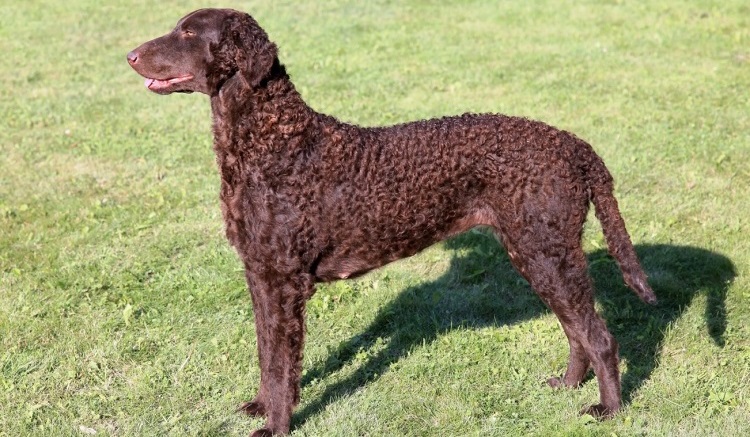This gorgeous Curly-Coated Retriever dog breed was popular with English gamekeepers and hunters, but they’re more popular today as sporting dogs.
Now this gorgeous pup will be the perfect addition to your household, and an adorable one at that, with a brilliant character that will fit straight into your family dynamic.
Most retrievers are super loyal and will almost definitely stick to one family member, so don’t worry too much if you aren’t the chosen one.
But more on that later! Let’s take a look at the curly-coated retrievers, including their background, history, and physical appearance.
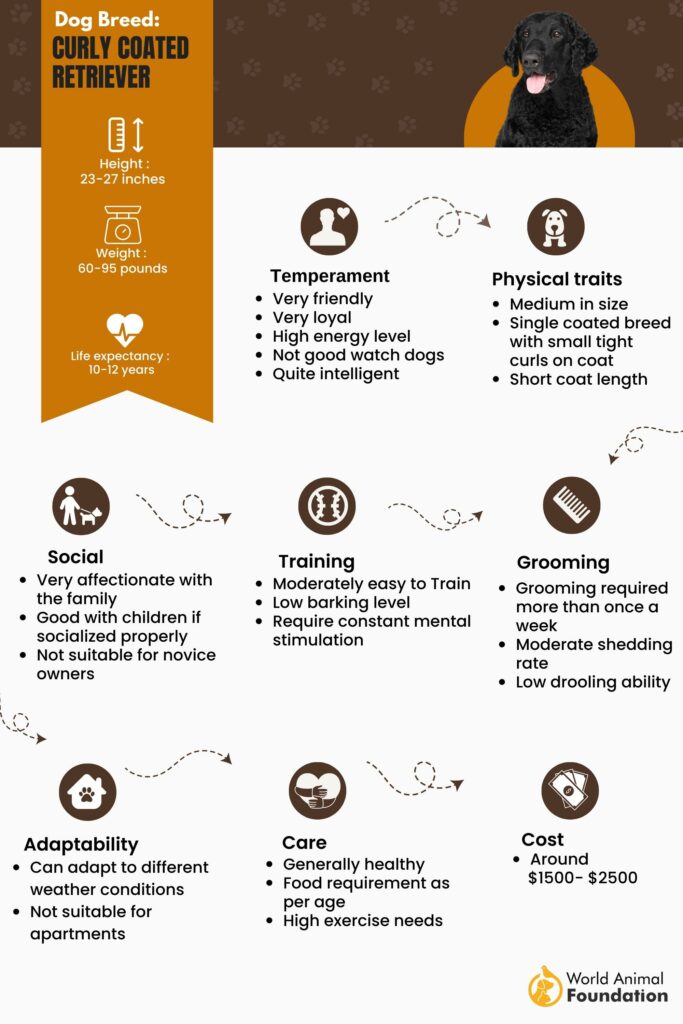
About the Breed
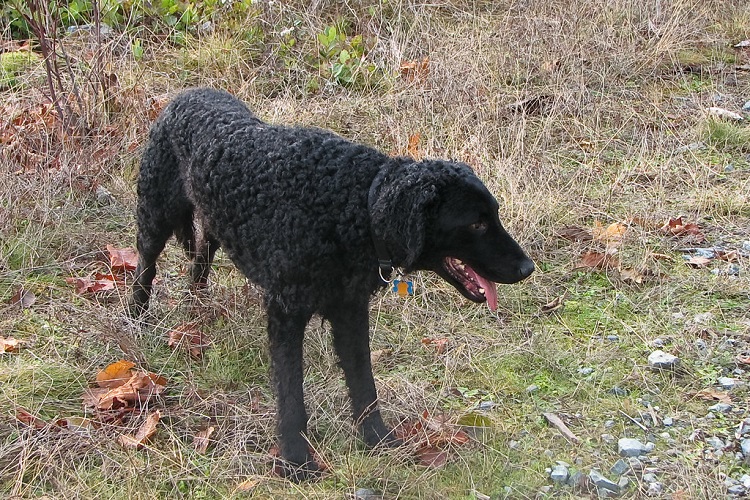
Believe it or not, this breed is one of the oldest breeds of retrievers out there, and there’s no doubt that they’re known for their swimming abilities and role as sporting dogs.
Their gorgeous curly coat acts as a little waterproof layer which is also thorn resistant, meaning you won’t have to protect this little guy by layering him up in waterproofs – it comes all in one!
It might be surprising, but retrievers are super graceful when they want to be – you wouldn’t expect it if you’ve met some of the retrievers out there.
There’ll most certainly be a favorite person in your household that the curly will warm to more than others, so don’t be offended – it’s the same with other retrievers too! They are very gentle and affectionate, but they won’t need things every two seconds. That’s always good news.
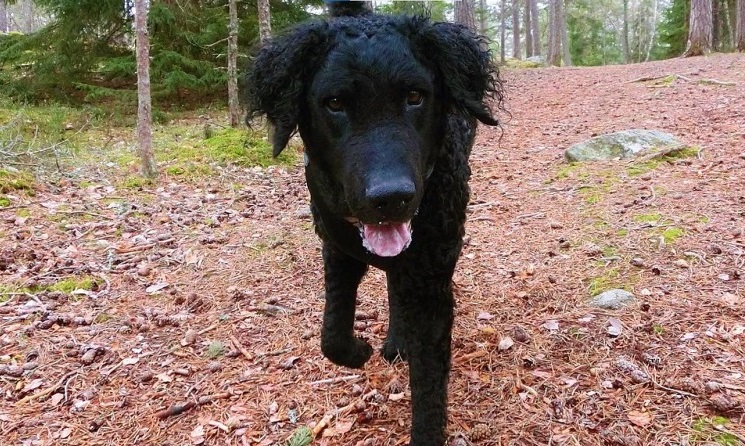
Yes, they do need a lot of exercise, so if you don’t love to walk and don’t have an active family, you may have to learn to like it! It’s super important to be mindful of the amount of exercise you do with the Curly-Coated Retriever because if they’re bored, they can be pretty hard to manage!
Vital Stats
Breed Group
The Curly-Coated Retriever is part of the Sporting dog breed group, so rest assured you’ll get your new years resolutions in with this dog breed – they’re certainly no couch potatoes!
Height
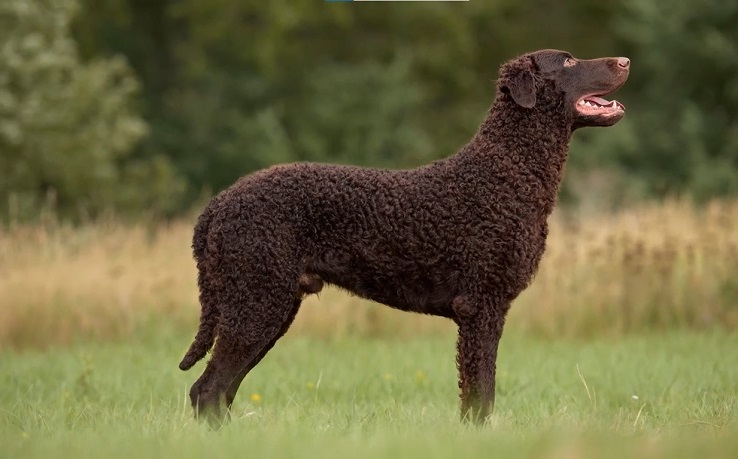
Of course, like with any other breed, heights will vary with males and females of this breed. The male Curly-Coated Retrievers will measure around 25 – 27 inches in height, whereas females will measure around 23 – 25 inches in height.
Weight
Weight is another vital statistic that many people like to consider, so how much does this breed weigh?
Well, you’ll expect the curly to come in, weighing from around 60 pounds to about 95 pounds.
Life Span
Luckily for you, Curly-Coated Retriever is a dog for life, and the Curly-Coated Retriever can live from 10 to 12 years. So, there’s certainly a lot of room to love this retriever breed for a long time.
History of Curly Coated Retriever
The Curly-Coated Retriever breed began when it was labeled by the American Kennel Club in 1924, but what about their history? Where did they come from, and what did they do?
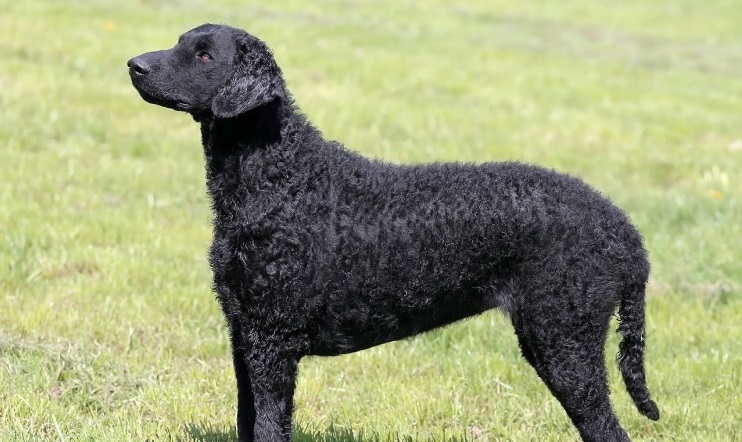
Let’s travel over the ocean to the United Kingdom, where this breed was originally bred in England. They were originally bred for the posh and upper class and were often used for hunting during the late 1800s or even earlier.
Some people are also led to believe that the Curly-Coated Retriever descended and adapted from the Irish Water Spaniel during the 16th century as well as other breeds that carry similar traits.
Unfortunately, this is the only history we can really give you on the breed because not much is documented! However, we know that they’re super sporty, and there’s no doubting that, considering they were used as hunting dogs in England as early as the 17th century!
Curly Coated Retriever Puppy
Curly-Coated Retrievers never really grow out of their puppyhood, so you will almost definitely end up with an adult dog who will still try and sit in your lap.
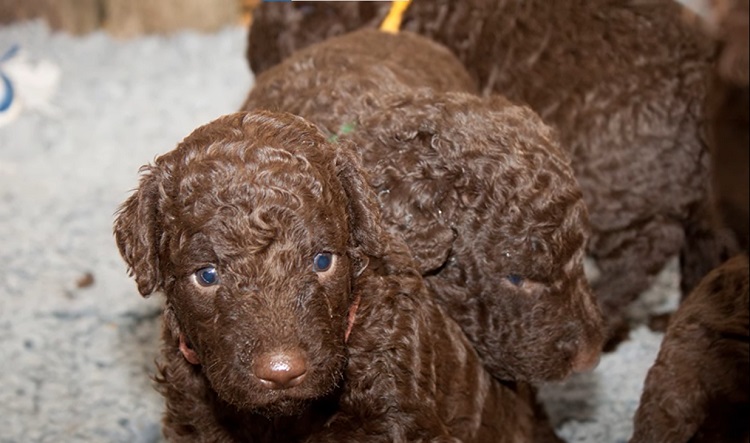
You’ll also soon find out that your puppy has a voice and is not afraid to use it(loves barking). These pups can be self-confident, have an attitude, and love to chew and nip, so keep your valuables out of the way just in case.
Another thing is to always get your pups from a good breeder. Buying from a puppy mill will only give them more funds to continue this inhumane breeding. So try and rescue if you can, but if not, there are plenty of good breeders out there.
Breed Traits and Characteristics
Despite having quite a high energy level and loving exercise, Curly-Coated Retriever can actually be pretty calm and collected, especially whilst at home with their favorite family members.
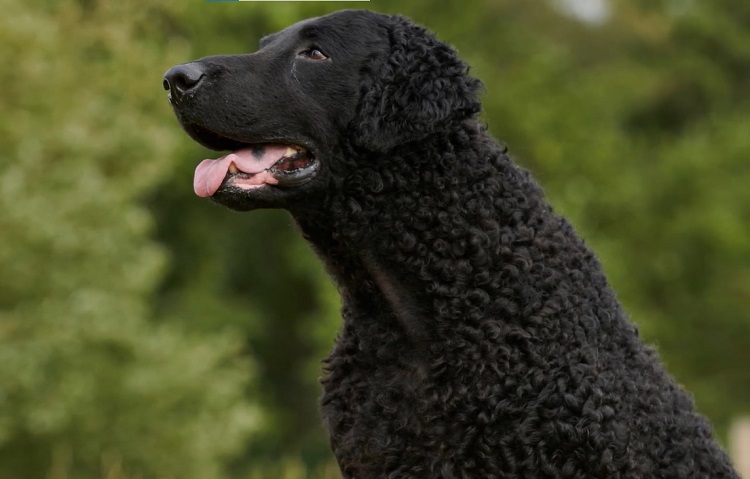
If you have established decent crate training, good manners, and enough exercise, the Curly-Coated Retrievers won’t be a problem for your household.
If you’re keen or eager to teach your Curly-Coated Retriever new tricks or skills, they’ll be able to conquer them soon enough because they are wickedly smart dogs.
This means that they require a great deal of mental stimulation. But you can also show off your Curly-Coated Retriever in dog shows as a confident owner, and they won’t disappoint!
If you have an apartment and you are eager to get a Curly-Coated Retriever, it may be worth reconsidering, or maybe you want to consider moving house altogether.
It seems like a lot to move house for one dog, but Curly-Coated Retrievers aren’t the biggest fans of adapting to apartments like some other retriever breeds.
However, they are very affectionate with household members and a great family pet! They really do love children and can actually deal pretty well with other pets or other dogs in the house. They can also be fairly easy with strangers because of their chilled and easygoing nature.
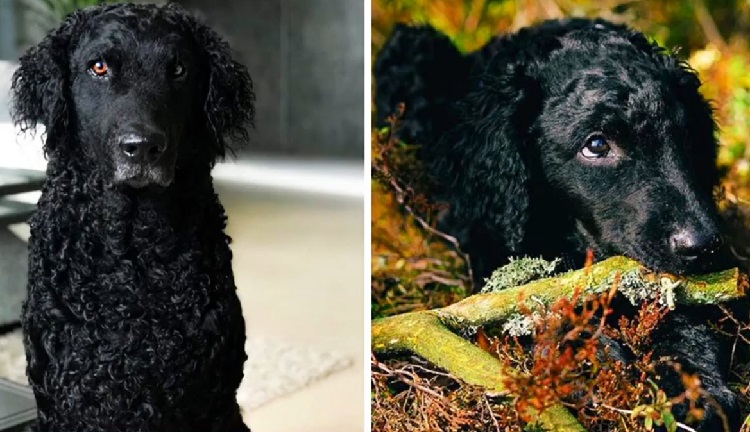
It’s always a good thing to hear when a dog doesn’t shed too much or doesn’t drool over your furniture or on you, for that matter. So, you’ll be glad to know that these dogs have fairly low drooling potential and also don’t shed too much.
Unfortunately, Curly-Coated Retrievers aren’t hypoallergenic, but there are plenty of things you can do to bring that shedding level down even more, especially during shedding season.
Physical Appearance
On its first appearance, the following are the things you may notice about the Curly-Coated Retriever.
Size
We’ve already mentioned the sizes of the Curly-Coated Retriever in our vital stats section, but let’s refresh our memory a little bit! Males can grow from 25 to 27 inches tall, while females will range from 23 to 25 inches.
Like most species, the females are smaller but, surprisingly, aren’t that small compared to the males!
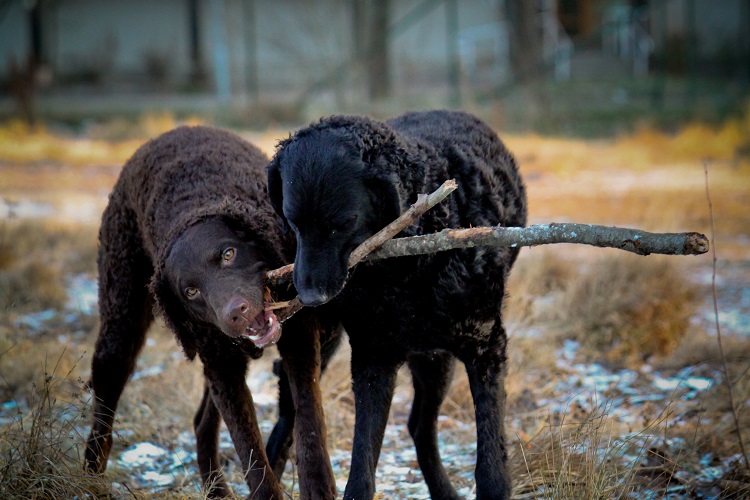
Coat
But what about their coat? It’s certainly recognizable, but what does it feel like, and what does it look like?
Well, believe it or not, Curly-Coated Retrievers don’t actually have an undercoat. Females also tend to shed this coat every six months, so you’re certainly in for a treat.
They have tight curls that come in two color options, and they’re basically an all-in-one coat with thorn resistance and waterproofing – you’ve got to admit that’s pretty cool!
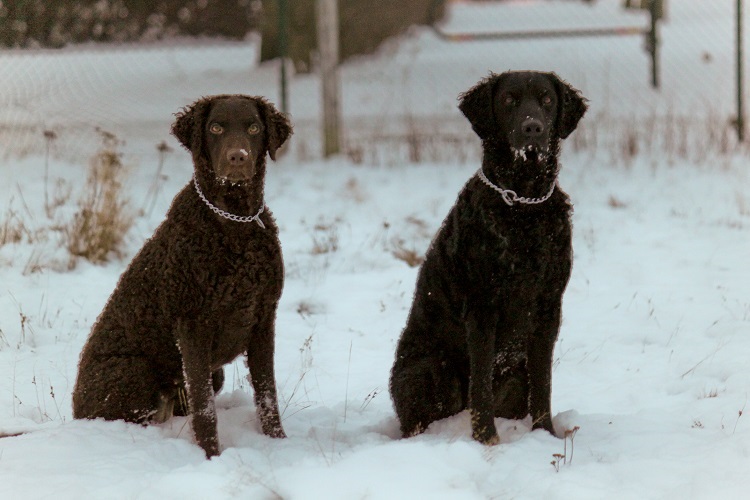
Color
Fear not; the Curly-Coated Retriever dog breed doesn’t just come in one color; there’s a little bit of choice. There are two main coat colors for the Curly-Coated Retriever. These are black and liver, sometimes with a few white hairs but never in patches.
We know a “liver” coated retriever may not sound like the nicest thing, but it is a gorgeous brown color that is certainly worth considering if you want to amaze people with your dog, which, deep down, we all want to do!
However, they can be a lot rarer than the solid black color, so it’s definitely worth keeping your eye out!
Markings
These dogs don’t really have markings because of their less broad range of colors, solid black and brown. For some, this is sad news, but at least you get to appreciate your dog’s coat color in full!
Curly Coated Retriever Temperament and Personality
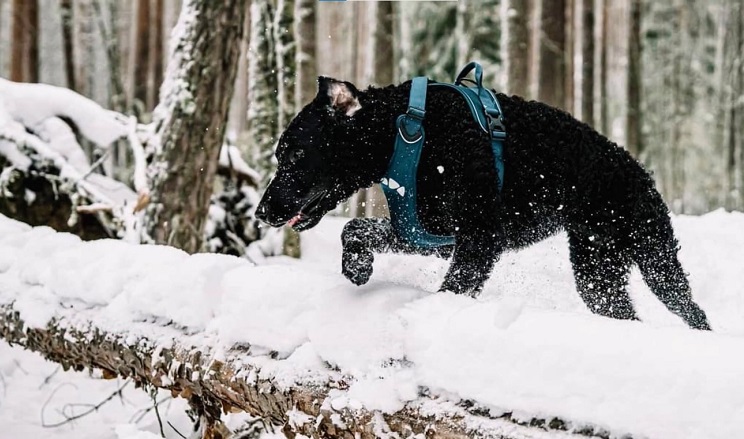
Curlies were bred to be gun dogs, but their temperament has changed quite a bit since then. They are very chilled out in their own home and love lots of affection from their family, but that doesn’t mean that they don’t also love a good adventure.
Retrievers love long walks and almost any form of adequate exercise or dog activities that can really help calm them down.
They are very loyal and tend to stick with one family member (don’t worry, you haven’t done anything wrong) but can be unsure of strangers, which is why early socialization with people and other animals from a young age is really helpful.
Health and Care of Curly-haired Labrador
One downside to these amazing pups is how many illnesses and health problems they can suffer from, so to make your life a little easier as a pet parent, we’ve listed all the things we think you should be cautious about.
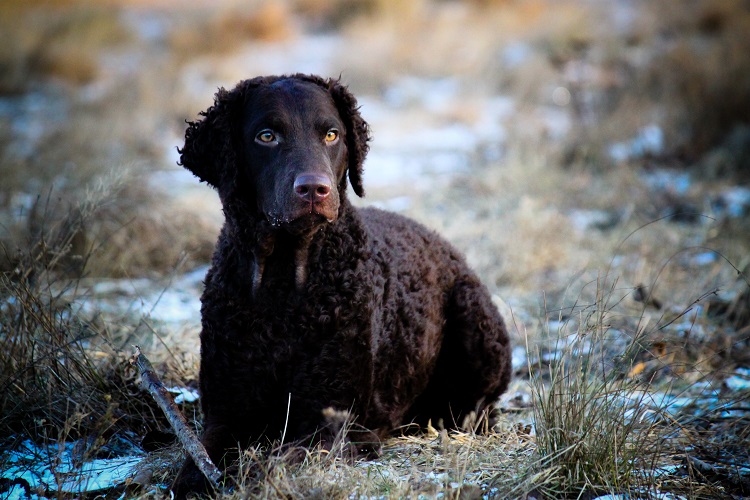
Hip Dysplasia
First up on the list is hip dysplasia which might lead to your dog developing arthritis because their joints haven’t developed quite right.
This can also cause real difficulty when your pup tries to stand up, but no need to worry too much as arthritis itself can be treated, and surgery is always an option.
Elbow Dysplasia
Elbow dysplasia is very similar to hip dysplasia and can lead to many of the same problems, but as we’ve said above, you have options to treat this.
Persistent Pupillary Membranes (PPM)
If you’re a bit twitchy when it comes to eyes, you may want to stop reading now, but PPM is when the strands of the fetal membrane that protected your pups’ eyes before they were born can still be seen.
They should be gone by around 8 weeks, but if they’re not, this could lead to cataracts. Treatment for this is usually eye drops, but your veterinarian can give you more information than us.
Progressive Renal Atrophy (PRA)
PRA is slightly more serious than PPM as it will eventually cause blindness in your Curly-Coated Retriever.
Luckily this can be caught very early on before any sight has been taken from your dog, but maybe it’s time to start making it a habit to get their eyes checked, just to be safe.
Retinal Dysplasia
Curly-Coated Retrievers don’t seem to have much luck with their eyes as we move on to the third eye condition on the list.
This causes folds in the retinas that can, unfortunately, lead to blindness – we really recommend getting your dog’s eyes checked at least once a year to save them the pain and discomfort from things like this.
Pattern Baldness
Like us, dog’s can suffer from pattern baldness, but there is no cure for this. There’s no need to worry; we’re sure your little one looks just as cute as they did before!
Lymphosarcoma
This type of cancer is very common in this breed, but you’ll be happy to know that 80% of dogs with chemo will go into remission.
Fibrosarcoma
Fibrosarcoma is when tumors are found in the connective tissue, but it can also spread to other body parts like the heart. There are a few different treatment options for these tumors, like chemotherapy and hypothermia therapy.
Mast Cell Tumors
Mastocytoma is the most common type of skin cancer in dogs and can happen almost anywhere over the body, but, again, there are many treatment options that could help.
Hemangiosarcoma
You might have noticed by now that cancer is quite common in these breeds, as this is another type usually found in the blood vessels.
Melanoma
Melanoma is yet another form of cancer your Curlie can get, and this can be found on the skin or in the mouth. This, unfortunately, spreads through the blood, meaning it can cause serious harm to your pup if it isn’t treated quickly.
There are a few treatment options available, like radiation and surgery, and part of the jaw can also be removed if the cancer has spread to the mouth.
Adenocarcinoma
This is probably the most common type of cancer in dogs and can be found in the uterus, mammary glands, and intestines. It’s also very likely that if your dog has lung cancer, the tumors are adenocarcinoma tumors, but these can be removed in surgery, and chemotherapy is usually offered.
Osteosarcoma
Curlies often get osteosarcoma because they are a bigger dog breed. This bone cancer will eventually cause your dog some serious trouble. You might first notice they can’t walk, which might also result in amputation to save their life.
Cataracts
Cataracts are more common in older dogs, but that doesn’t mean they can’t happen to your pup as well. These can be caused by diabetes, a bad diet, or genetics.
Follicular Dysplasia
This is a health condition that has to do with the canine hair follicle that’s caused by genetics. This abnormality can lead to hair loss in your dog; unfortunately, it’s not treatable.
Hypothyroidism
This is more common in dogs than you might think, and you’ll be happy to know that you don’t have to worry too much about your pup if they have hypothyroidism.
You might notice weight gain and changes to their skin and unique coat, but they will go on to live a full life with treatment.
Entropion
Entropion is when the dog’s eyelids roll inwards, irritating the eyeball, but this can be treated with surgery.
Ectropion
This is another eye-related health condition that can be corrected with surgery. The eyelid sags, which then leaves the eyeball open to infection.
Distichiasis
Simply put, this is when your dog grows an extra row of eyelashes that can seriously irritate its eyes. These can be removed, making your dog’s life much more comfortable.
Glycogen Storage Disease (GSD)
This is when glycogen can’t be released, which can lead to a whole host of other health issues.
Gastric Dilation Volvulus (Bloating)
Bloat in dogs can be fatal as their stomach can twist, which stops blood from reaching their heart.
Curly Coated Retriever Nutrition
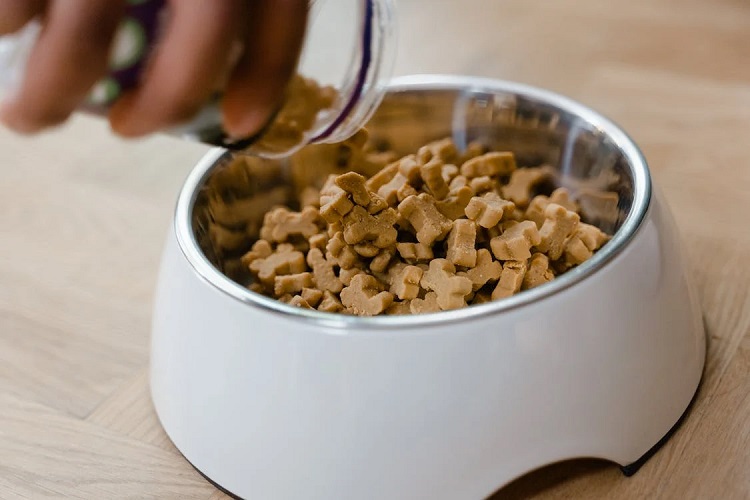
Retrievers’ diets are pretty similar to most other dog breeds; you just need to make sure they’re getting all the vitamins and nutrients that they need.
A great place to start is some good dry food like biscuits, but keep looking out for those store-bought ones full of all the wrong things.
You can leave it at that or make it a little bit more interesting for your pup by adding meat or any treats you wish as well. Coconut oil or peanut butter can be great to mix with dry food to help maintain healthy coats and make the dry food a little easier on their mouth.
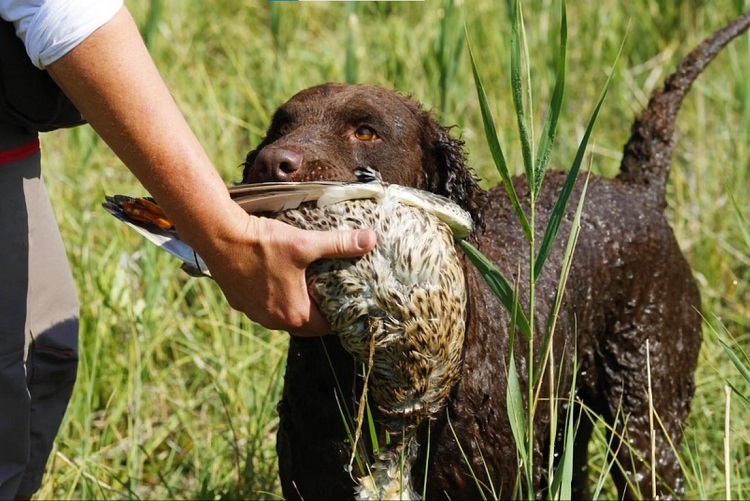
Curly Coated Retriever Grooming and Training
We tend to think curly breeds don’t shed as much as other breeds, but that is certainly not the case for Retrievers – you might want to invest in a metal comb or rough brush before you start drowning in hair!
Now their hair can frizz, which is why you only want to brush them often when shedding; otherwise, trimming their coats can help keep them looking stylish and at their best.
Due to the oily coat, Curlies don’t need baths often, but when they do, you’ll probably notice how amazing their curls look.
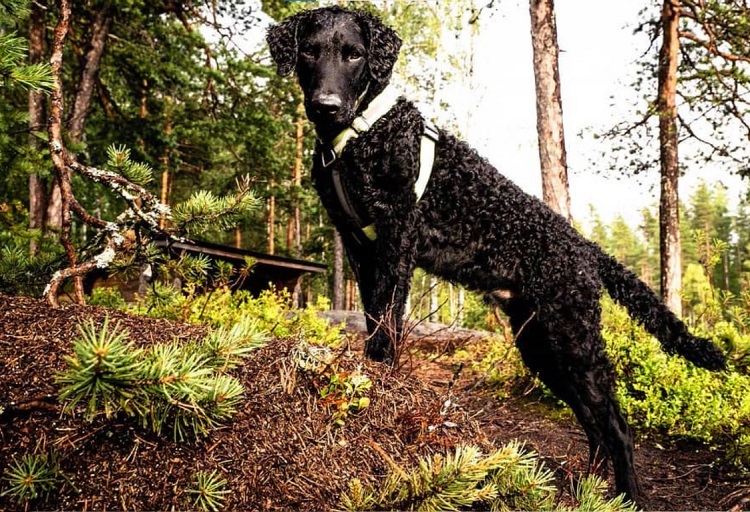
As we’ve discussed before, retrievers are like overgrown puppies, which will be very apparent when you train them. You need to be straight to the point but not in a harsh tone; otherwise, they will ignore you. They require decision-making and agility training.
This is a super-intelligent dog, so keep it interesting and try not to repeat the same things repeatedly because they won’t take any interest – we warned you they were similar to small children!
Facts about Curly Coated Retrievers
- Did you know that Curlies are one of the oldest retriever breeds and were one of the first to be used for the retrieving game?
- They have also stayed purebred for longer than you might think, since the 1900s!
- This breed needs lots of daily exercise (half hour to one), which is why it’s great to know that they love swimming just as much as a good walk in the great outdoors.
- Their coats might look like they need lots of grooming to keep those crisp curls looking great, but Curlies need minimal bathing and grooming to keep them looking their best.
Golden Curly Coated Retriever Relationship with Children
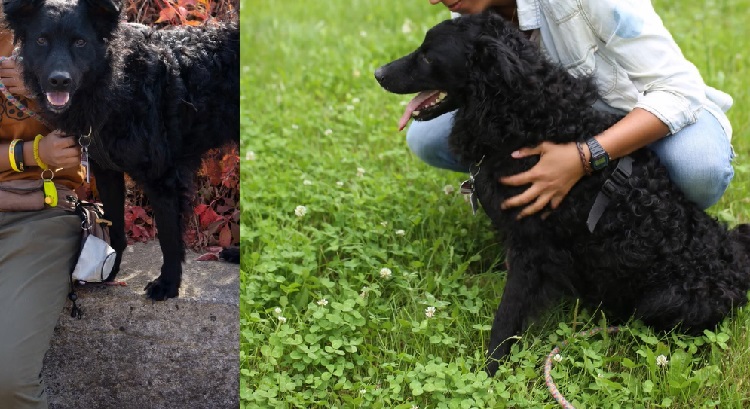
These pups are brilliant around kids and will want to get involved in everything they are doing. They’re gentle and lovingand full of affection, but they can also be pretty childish themselves.
Retrievers want to stay puppies as long as they can, which can make them a bit of a handful, and because of this, they might be better for families with older children.
Curly Coated Retriever Rescue Groups
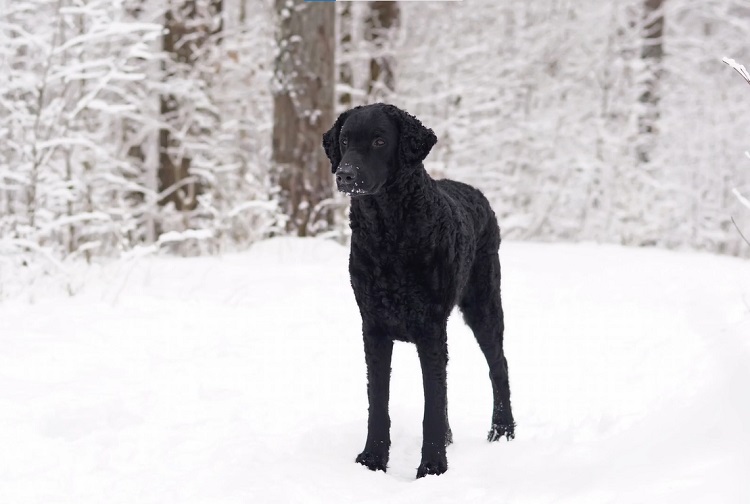
There are so many Curly Retrievers out there that need to be rescued, so we’re super excited you’re interested. We might not have listed any in your area, but it’s super easy to find a rescue near you by contacting the National Breed Club.
- Curly Coated Retriever Club of America
- Curly Rescue
Conclusion
So, we think we’ve managed to cover about everything you’ll ever need to be aware of Curly-Coated Retrievers in this article.
We hope you’ve learned something new: how much exercise they need, how perfect they’ll be for your family, or maybe you’ve found out more about some of the health conditions they might suffer from.
Is this the next breed for you? If so, you might want to visit some of the rescue groups we’ve listed above to take a look at your next best friend and a great companion.


